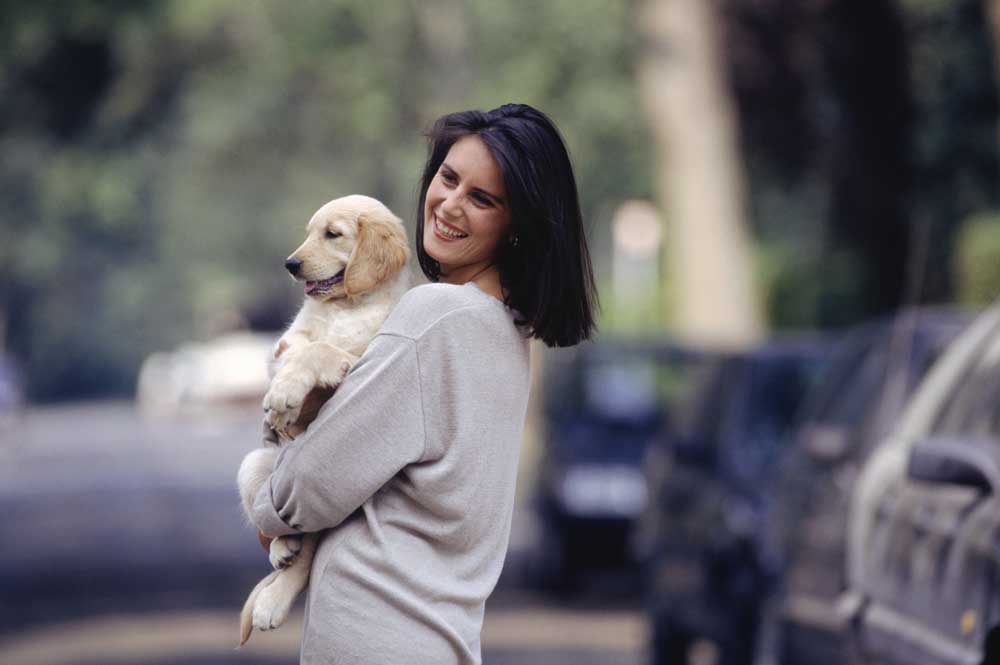Motion sickness is common in puppies
Published 12:00 am Friday, September 9, 2016

- ThinkstockWhen traveling with a puppy, some basic knowledge can help avoid headaches for the dog and owner.
Q: My new puppy seems to get carsick. I drove a long way to get her and she vomited several times in the car on the way home. Now almost every time I take her anywhere in the car she vomits.
I have tried ginger snap cookies, calming treats, happy traveler treats, essential oils, dog-calming pheromones, meclazine, and even Benadryl. The Benadryl made her vomit even before we got into the car! She is fabulous about everything else.
A: It is not unusual for younger puppies to have motion sickness. It may be related the ear structures in a developing dog and they seem to outgrow the problem most of the time. A few adult dogs will also have this problem.
It is very important to have a good comprehensive exam done to make sure that your puppy is healthy. Ear problems in general can often make motion sickness worse. In addition, any condition that causes pain or discomfort can be made worse by the unpredictable movement in a car; it is important to rule out and treat any painful issues.
You have already exhausted many of the over-the-counter products that are available to help with motion sickness and things are not better for your puppy. If her examination at your veterinarian’s office is normal, your puppy may need a prescription medication for a while in order to have a more comfortable ride. Medications like Cerenia work well for nausea and vomiting.
Since she has been vomiting with car rides for a while, she will also need behavior training and modification. I would recommend stopping all car travel for a few weeks to help her get back to normal. Start a training class and establish some basic commands like sit, stay, and down. Give treats as rewards. (I like to use the puppy’s normal food for these exercises.)
After these basics are mastered, start walking your puppy around the car and giving her treats. If she is unafraid and happy then you can start asking her to sit or stay. Play with her and make the car a fun place to go out and walk around.
Step two would be to let your puppy jump into the car and back out again. Small breeds can be lifted into the car. Large breeds can be trained to use a ramp. If you are using a ramp it is best to start with the ramp in the house first.
Make sure to place your puppy in a front seat facing forward. Many puppies do better if the can see out and forward. The seat or travel carrier may need to be raised high enough to see out. Make sure large breeds have a doggie-approved seat belt.
Unfortunately, many vehicles have an air bag in the front and this may not be safe. Be sure to talk with veterinarian about where to place your dog depending on your pet’s size and the type of vehicle that you own.
Simple in and out exercises without moving the car are important for the first few days to weeks. Make sure your car is cool and air circulation is good. Do not smoke in your car or around your dog. You can use a favorite toy or treat and play with your dog after she gets in. Keep the initial few times in the parked car very short and happy.
Step three is to turn on the motor and play with your puppy. If she is not fearful and seems calm you can progress to step four in a few days.
Step four is to try a very short drive in a straight line, then get out and play with her. Do several short drives with play stops for several days. Slowly work up to longer drives and try to end at a fun place like a park for a shady walk or a favorite friend’s house.
Be sure to avoid hills, bumpy roads, winding roads, or roads where there is a lot of traffic and sudden stops. Avoid roads where there is construction and loud noises. As her training progresses, you can slowly add in longer drives and more challenging roads.
If she has issues with even the most basic steps, I recommend that you seek the help of a board-certified veterinarian that specializes in behavior therapy.






